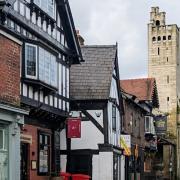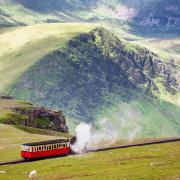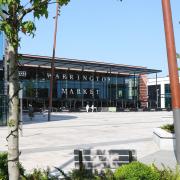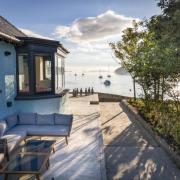‘O hear us when we cry to Thee, For those in peril on the sea’. The words are from the hymn Eternal Father, Strong to Save (1860), traditionally associated with seafarers, especially in the maritime armed services, but which also has resonance for those operating in the civilian marine including the brave personnel of the RNLI.
Lifeboats existed before the RNLI, the first purpose-built craft stationed at South Shields in 1790. It was almost another 35 years before the National Institution for the Preservation of Life from Shipwreck was established by Sir William Hillary in March 1824. In 1854, the charity’s name was changed to the Royal National Lifeboat Institution (RNLI) and this year it celebrates its 200th anniversary. The UK’s coastal communities know and respect the sea. In peacetime, it provides pleasure and sustenance. During wartime it is our ‘moat defensive’, protecting us from foreign foe. During WW1, lifeboats were launched 1,808 times and saved 5,332 lives (1914-18). This heroism was repeated in WW2 when another 6,376 lives were saved (1939-45) with 19 lifeboats helping with the Dunkirk evacuation.

The scale of today’s operation is staggering. RNLI volunteer lifeboat crews and lifeguards saved 506 lives in 2022 alone and helped 39,680 souls. Around 140 people die annually in UK and Irish coastal waters and the RNLI’s vision is to save every single one of these. The RNLI works with communities and partners to try and prevent people getting into danger in the first place with males over 15 most at risk. It is not just about the crew members braving the waters, of whom only one in 10 has a maritime profession, with thousands of dedicated fundraisers, and volunteer shore crews helping with launching and recovering lifeboats. There are 238 UK and Irish lifeboat stations covering 19,000 miles of coastline with 441 lifeboats (including relief fleet vessels) and seven hovercraft, while RNLI lifeguards patrol 240 UK and Channel Island beaches. The first woman qualified to command a lifeboat in 1969.

Chris Gaskin has been on three lifeboats and is currently an area lifesaving manager. His brother James was a crew member on West Kirby Lifeboat for 10 years. His uncle was also on West Kirby, while his great uncle was instrumental in getting the inshore lifeboat there and was coxswain of Hoylake lifeboat. Chris’s mum was the first person ‘rescued’ by West Kirby, his great uncle using her as an excuse to take the boat out on its first day; she’s never lived it down. In 1996-97 Chris represented the RNLI as volunteer crew onboard Toshiba Wave Warrior, in the BT Global Challenge, sailing the first leg from Southampton to Rio and then a further leg from Sydney to Cape Town.
'I was born at Clatterbridge Hospital and brought up on the Wirral, so very much a local, who went away, but came back,' he says. Although I’ve not been a merchant seaman like some of my colleagues, I do have a maritime background and have had a long association with the sea with recreational water activity always being a big part of my life. My great uncle was a longstanding lifeboatman, coxswain of the Hoylake Lifeboat, which he'd been instrumental in establishing in the 1960s. My uncle meanwhile was on the West Kirby Lifeboat. I was already helping out at the sailing club, so with the family associations it seemed a very natural progression to join the RNLI. My dad, sister and brother have all been involved too.

'There was a strong feeling of wanting to give something back to the community so I was very happy to join at West Kirby in 1990, aged 19, and went on to become a helm around 1994. I moved to London in 2000 to run an outdoor centre and when canoeing down the Thames saw a D-class and ended up joining Teddington Lifeboat, going on its first shout before the official opening date, then joining Chiswick Lifeboat. It was 2010 when I came back home and rejoined West Kirby Lifeboat.
'I’ve never had to call upon the RNLI’s services and I’d do everything possible not to have to be rescued, however, I wouldn’t be embarrassed if it did happen; my brother had his life saved by the RNLI. It's a service that never discriminates. If you need help, we’re there; it is a great leveller. You don’t have to be crew to be valuable either, something I appreciate even more now that I’m a staff member in my role as an area lifesaving manager (since 2018), which gave me an opportunity to work for an organisation I felt passionate about.

'I look after the stations in North Wales during the day, working with operational volunteers, experiencing what they go through day in and day out, but I’m still a volunteer after that. I wouldn’t expect anyone to do anything I wasn’t prepared to do myself. When I tell my wife I’m on call for the RNLI in the evening she has quipped: "Haven’t you been doing that all day?" That’s what the life is like; it’s something we embrace. We are one crew, which means everyone from a fundraiser in land-locked Birmingham to someone who leans over the side and pulls someone out of the water. I moved to Hoylake in December 2022 and joined Hoylake Lifeboat in May 2023 as a trainee lifeboat and hovercraft crew.
'Although I was on inshore lifeboats for 30-odd years, and became a helm on a D-class lifeboat, I’m effectively a trainee again as I’m now on Hoylake’s all-weather boat. Although some training carries across, there are new things I have to master. I enjoy the training, which is very comprehensive today and is there for everybody; it doesn’t matter whether you’re a butcher, baker or candlestick maker. Everyone brings their own strengths and skills and the variety of experience we have builds the strength of the organisation. We have that essential camaraderie both on the boat and in the broader team. Every lifeboat has its challenges. Due to its operational capabilities and vulnerability, the inshore D-class shouldn’t really go out in stronger winds. I did experience a capsize in one of those, however, the D-class also launches the most and rescues the most people out of all the lifeboats. It’s maybe not the most recognisable to people but does a really good job. The all-weather, as the name suggests can be out in all weathers, right out at sea, and it can get tasty on the Irish Sea sometimes. It goes out in absolutely everything though.

'We have total trust in one another when we’re at sea or when launching etc, and outside the RNLI as well. When we’re afloat, it’s that small team you have to rely on and we all use our personal experience to hopefully ensure a favourable outcome. Of all the ‘shouts’ I’ve been involved in, the one I was most proud of was many years ago when a windsurfer needed help off West Kirby. I was advised by the coastguard to look in one place but I had a gut instinct, based on my local knowledge and understanding, having been a windsurfer myself, that it was more likely they were somewhere else and fortunately I was proved right. He wasn’t in a typical windsurfing area but hadn’t really done anything wrong. Education comes into it though and we have a water safety message we try to get across about the tides (70 per cent of people probably don’t know where to find tide tables or how to read and interpret them).
'When people think of the RNLI they probably think of the lifeboats but we also have our lifeguards patrolling our beaches on the Wirral, at Sefton, and across North Wales. The core values of the RNLI are to be courageous, dependable, trustworthy and selfless and every volunteer has those qualities.'
There will be a programme of activities across all regions, including a special service of thanksgiving on the RNLI’s 200th birthday (March 4, 2024). The cost of running the RNLI in 2022 was £188 million. 81p of every £1 raised funds for lifesaving activities, with the remainder used to generate more funds for this vital institution ‘for those in peril on the sea’.




























